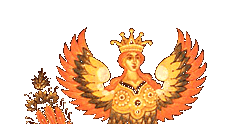Catalogue:
Search by:
Sale!
Login
Subscribe to news
Your E-mail
Comes out once a month!
We accept PayPal
|
Texts
The Creation of a Russian Lacquer Box
If one knew how much time and effort went into the creation of a Russian lacquer box,
one would think them inexpensive indeed. Sergey Turin, who produces some our finest boxes,
showed us how his boxes are made using the technology first developed by Piotr Korobov two
hundred years ago near Moscow and refined over the centuries. Here is a synopsis:
 |
Making the blank box. The blank, unpainted
papier-mache box alone takes six weeks to produce. The process begins by coating strips of
cardboard with a flour and water paste and then wrapping and compressing the strips around
a wooden mold of the desired shape. After the paste has penetrated the cardboard and set
up, the side is slipped from its mold and dried in an oven together with unmolded parts of
the box. |
Slipping the molded sides from the mold. |
 |
After drying, the box parts are submerged in boiling-hot
linseed oil for 20 minutes to an hour and a half. For the final drying process, the box
parts are placed in an oven starting at 50 degrees centigrade. Over the course of a month
the temperature is slowly raised to 120 degrees and then lowered to room temperature. Then
the parts of a box are glued together. |
Immersing the molded cardboard in boiling-hot linseed oil. |
|
 |
The surfaces must be carefully prepared to
assure that all layers of finish adhere to the box. After a prime coat of a special gray
paint is put on, the box once again goes into an oven and held for 24 hours at a
temperature of 70 to 100 degrees. Then a base coat of a terra-cotta finish is applied and
it, too, is baked at 100 degrees this time for 48 hours. Finally, a coat of the gray base
coat is applied. After each coat, the surfaces are sanded by hand to assure a strong bond
with the next coat. It is a time-consuming process, which stretches out over six weeks. |
|
Applying the first base coat. |
|
 |
The painting. The painting of the
picture is more involved than one would expect. The artist paints the picture in layers.
Between each layer, he or she applies a coat of lacquer. The first layer is a base color
of the painting. The second layer adds more colors. The third and successive layers add
more and more colors and details until the picture is complete. Usually, there are four or
five layers. After the painting is complete a protective film is put over it. A
separate artist usually paints the filigree, which on Sergey’s boxes often contains
touches of color coordinating with a color in the painting. The lovely settings and the
exquisite filigree of Sergey’s boxes combine with the painting to produce boxes of
extraordinary beauty. |
|
A box
blank with a painting of Princess Saltikova on it. The setting will be painted next. |
Click here to send us a question! |
 |
The picture setting and filigree. The
pictures of many boxes have simple, black settings with filigree. The settings of the
pictures in Sergey’s boxes, however, are works of art in themselves. The area around
the picture and the sides of the box will sometimes have a tartan effect. Other times it
will be brush streaks of a dark color on a lighter, and at other times, a watermark
effect. The colors of the settings coordinate with colors in the picture. The effect is
stunning.
Polishing. Seven coats of lacquer are sprayed on. Each
is sanded before the next is applied. The final coat is brushed with a yarn brush and
pumice to a brilliant sheen. This is the final step in the creation of a beautiful work of
art. |
|
The final step: Polishing with a yarn brush and pumice. |
|
We are pleased to be
able to offer our customers boxes of such quality.
|








